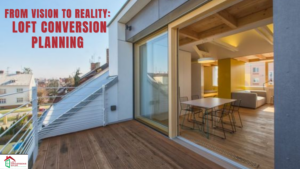Do you want to save with your bills and retain the heat in your loft? Then, insulating your loft conversion is the best solution. But how much does loft insulation cost? In this guide, we’ve put together everything you need to know about attic insulation to make your home more energy-efficient and the things you need to consider.
A basic insulation job may cost £600, but full loft insulation with complete boarding may cost £1,500 depending on the materials used, loft sizes, and the labour cost of a loft specialist. But if the roof of the attic requires repair, widening or installation of a new hatch and re-routing of electrical wirings, the price may rise to £4,000 and beyond. Of course, you can save more if you will fit the insulation yourself, but if you need assistance, getting help from specialists will guarantee a good job. Here’s a breakdown of an average insulation cost.
BREAKDOWN OF LOFT INSULATION COST
Floor Insulation Cost
The cost of attic insulation depends on the type of insulation material you choose. In a loft with an area of flooring of 15m², the average price will vary as stated below.
Type of Insulation – Average Cost
Blanket £400-£600
Loose-Fill £275-£325
Blown £400-£500
Roofing Insulation Cost
If you can’t insulate the floor, you may need to do so on the roof, but it will be more costly since you will need to cover a larger area. The type and design of your home will also affect the cost of insulation.
Property Type Average Cost Annual Saving Payback
Detached £640-£800 £250 2 years
Semi-Detached £550-£680 £140 2 years
Terraced £450-£570 £135 2 years
Bungalow £375 £200 1-2 years
OTHER FACTORS THAT AFFECT THE COST OF LOFT INSULATION
Removal of Old Insulation
If your loft has existing insulation, but it got squashed, damp and damaged due to poor ventilation, you may need to replace it before placing the new materials for insulation. The cost may range from £200- 300 depending on the size and accessibility of your loft.
Space Accessibility
Another factor that may potentially affect the cost of your loft is space accessibility. If your attic is full of items, it may hinder the work and cost more time and money. You may ask the insulation company to remove the stuff for you, but it will cost around £50, depending on the company you’re using. So, better yet, remove the items yourself to save a couple of pounds.
Type and Amount of Insulation
The cost may vary from £2.50 per m2 for top-up loft insulation to £50 per m2 for a new and complete insulation project. The choice of materials can also be a factor.
LOFT INSULATION MATERIAL OPTIONS
Blanket Insulation
It’s the most popular choice for insulation due to its cheap cost and convenient roll design. Blanket insulation is usually made from either fibreglass or mineral wool backed with foil while other companies use either plastic or natural alternatives. It may cost around £2.50 per m2 but to comply with the 270mm required depth of insulation, the actual price may range to £5 per m2. It’s the most diverse option, but you need to make sure that the insulation if free from compression after installation so that it can provide its maximum efficiency and avoid condensation.
Pros: Cheap, easy to install, DIY-friendly
Cons: Not suitable for roof insulation, some materials may irritate the skin when handling.
Loose-Fill Insulation
Loose-fill, also known as blown-in insulation is usually made of fibreglass, cork, recycled papers and mineral wool in an often granular form. It’s best suited for inaccessible areas such as small spaces, corners and areas around pipeworks, but it can be messy and not cost-effective for large areas. The average cost for this material ranges from £5.70-7.20 per m2.
Pros: Easy to use in filling gaps and inaccessible spaces and handy for top-up insulation
Cons: Prone to draft lofts may cause the materials to become loose.
Spray Foam Insulation
This is the most expensive but efficient method of insulation because it requires specialist equipment. It can be done in just a fraction of time, and it lasts longer than traditional insulation materials. The average cost of spray foam insulation is around £55 per m2 but may vary depending on your chosen company and your location.
Pros: Most efficient in trapping heat, can be done in just a fraction of time
Cons: Costly and requires specialist materials, not recommended for DIYers
Sheet Insulation
This insulation method consists of an insulating material attached to a board is a budget-friendly and handy. It can be applied to the underside of the loft’s roof, or top layers on floors retain heat. The average cost of heat insulation is £10 per m2.
Pros: It’s handy, affordable and you can put decoration over it
Cons: Storing heavy items on top of it is not advisable.
ADDITIONAL COST
Like any other household projects, loft insulation may require additional jobs that need a pound or a two, including the following:
Relocating electrical wires
Sometimes, it is necessary to re-route the wirings so that it won’t interfere with the insulation. You may need to hire an electrician for this job which will cost you £150 in labour per day. But, if the electrician would insist on having a working partner for safety purposes and quicker completion, the price may increase up to £250, depending on the amount of electrical work that needs to be done.
Pipe Lagging
The exposed pipeworks in your loft also need insulation to prevent them from freezing over. You may ask the insulation company to do the job for you, but it may cost you an additional charge of around £70. If you opt to do it yourself, you need to buy insulating foam tubes that cost about £1.75 p/m and other cable ties that’ll secure the fitting.
Loft boarding
You may also need to lay boarding on top of your insulation to prevent heat loss and maximise the efficiency of the insulator. It will also help to support your loft surfaces so that it can have sufficient strength to carry the stored items without damaging the insulation. You can expect that it may cost you as much as £460 for materials and labour.
Loft access (hatch and ladder)
If your loft has an existing small hatch, you may want to install a larger one with a ladder to utilise your loft space with ease. A ladder’s price is about £275, and if you need to widen or reposition your hatch, you might need to spend an additional £200 for the material and labour.
You’ll also have to insulate hatch in your attic to prevent warm air from escaping through uninsulated areas so prepare another £15 or more for a polystyrene insulator measuring 1200mm x 2400mm.
BENEFITS OF LOFT INSULATION
As stated above, loft insulation has several benefits, including the following.
- Loft Insulation will improve the energy Performance Certificate rating of your property which increase the value and saleability of your home.
- It will prevent heat from escaping the room, therefore helping you save on your bills on an ongoing basis.
- It can help to reduce the amount of carbon emitted from your home and ventilation. Thus, it’s environment-friendly.
- You’ll have fewer problems with condensation.
- You can enjoy the cooler summer and warmer winter.
- You’ll also benefit from the noise reduction provided by thorough insulation in your loft.
So why not invest in attic insulation? It may cost you a considerable amount, but it could also help you save on your annual bill. So, within a few years, the cost can easily be made back. And if you’re planning to convert your loft into a living space, it will be more necessary to insulate it. So do not overlook loft insulation and make this project happen now.


